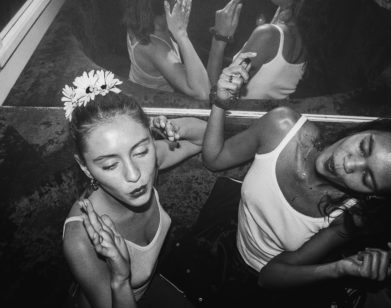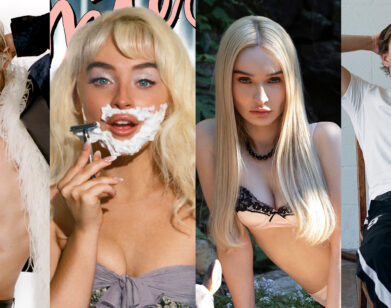STUDIO VISIT
“I Like to Kick the Door Open”: Shaniqwa Jarvis on Narrative, Nostalgia, and Art World Politics

Shaniqwa Jarvis photographed at Anthony Gallery. Courtesy of the artist.
We’re only three months in, but 2025 has already been an eventful year for multi-media artist Shaniqwa Jarvis. In February, her work was acquired at Frieze by MAC3, the collective of L.A. institutions that consists of the Hammer Museum, LACMA and MOCA. At the same time, she was planning her solo-exhibition at Anthony Gallery in Chicago. If You Can See My Thoughts, You Would See Your Faces, which opened last week, is a continuation of her long term inquiry into themes of memory, heritage and reflection through video, photography and scent. When we spoke via Zoom just after the opening, she recalled sitting down to work on the show and finding the same threads through her work again and again: “I realized, it’s hard to escape who you are, and it’s hard to escape what you’ve been born with,” she explained. On the phone, we dug deep into her experience toggling between the fashion and art worlds, the sensory components of her new show, and the overemphasis on her racial identity as a barrier to commercial success.
———
EMILY SANDSTROM: Are you still in Chicago?
SHANIQWA JARVIS: No, I’m back in New York now.
SANDSTROM: What was the opening like?
JARVIS: It was beautiful. I don’t really know anyone in Chicago besides the gallery owners and a couple of friends, and it was nice being with all these different people who were interested in my work. It was also beautiful walking into the show and finding out that most of it had sold. I don’t know if I’m allowed to say who, but really cool people that a lot of people know.
SANDSTROM: I mean, I really want to know who.
JARVIS: I’m not sure I’m allowed to say. But you definitely know who they are. But that was a very beautiful moment for me, because every time I show I’m like, “If it doesn’t sell, my mom will just put it up on her wall.” I still go into things with that thought.
SANDSTROM: What’s it like knowing that a famous person is going to have your work on their wall?
JARVIS: I’m always shocked by people who choose to have an intimate moment that I’ve created placed in their home, and something that will evoke emotion for them every day when they see it. And I like knowing that most people who have my work haven’t just purchased it as an investment.

i need to trust your soul, 2025. Archival digital print on cotton and silk, metal and walnut frame. 25.25 x 21 in.
SANDSTROM: In terms of the subject of the show, connecting with your younger self and different parts of your history, I’m wondering why this felt like the right time?
JARVIS: It’s really a continuation of something I started in 2023. The solo show that I did at CONTROL Gallery was called Everywhere You Go, There You Are, and that was my first big show in L.A. When I sat down to think about what I was going to work on, I opened a box of archival stuff and realized that 20 years prior I had taken the exact same photos; same style, same shadow, same light play, and I was like, “What lesson have I not learned? Why am I continuing to face myself in this way and constantly thinking about places and spaces that my ancestors have been?” And I realized, it’s hard to escape who you are, and it’s hard to escape what you’ve been born with. When I look at all of my work, I’m trying to tell the story of people in my family, because they weren’t able to. My mom’s side is American in the sense that they’re Native, Chinese, Black, and then my dad’s side is from Antigua, the Caribbean. The different things that both of those sides of my family have gone through in order to live is what happens for me too. I think nostalgia, in an academic way, will always be a part of my work.
SANDSTROM: That’s a really nice way to put it.
JARVIS: It’s the truth.
SANDSTROM: Can you describe your younger self?
JARVIS: Ooh. [Laughs] She was precocious. She was athletic. She was shy. She was hysterical.
SANDSTROM: Hysterical!
JARVIS: She was annoying. But hysterical and just funny. I think most of my friends who’ve known me for that amount of time would describe me as, “If she wasn’t doing this, maybe she should be doing stand-up.”
SANDSTROM: Amazing. There’s one work that’s like, four works stacked together. I love that use of placement to build out a narrative. Can you tell me about that?

it’s all around you, 2025. Digital C prints on Hahnemühle paper, mixed framing, wood 19 x 13 in.
JARVIS: Yeah. Everywhere You Go, There You Are was first time I started doing these photo collages. I used them in a way to show that I’ve always taken photos of certain things, and now I’m relating it to new work. For example, photos that I had taken when I was 10 of stuffed animals on my wall, I’m still taking photos of them in a car when I see someone who’s packed their car with stuffed animals. It also clicks back to this thing that George Pitts, who used to be the photo editor at Vibe and has passed away, said. The first time he saw my work, he was like, “You need a lot of space to tell your story.” It was like 20 years ago or something, and I was like, “The fuck did you say to me?” I took such offense to it, because he was like, “Most magazines don’t have enough space for you. We’re always going to want to run 10 of your photos, but no one’s ever going to give you that.” I’ve always thought about that. Then once I did it in that show, I just started to explore. At Frieze I did five of them, and everyone loves them. It’s a beautiful way to tell a story. I’ve always loved collage, and I love making it sculptural so that it’s not just a flat frame.
SANDSTROM: Do you think you’ll switch format for the images again?
JARVIS: I don’t know. There’s so much to explore. Frieze was great in that I walked into that show not knowing what the fuck was going to happen, and learning that my work had been acquired by the Hammer, LACMA, and MOCA. They formed a supergroup, and now my work is in the permanent collection of those three museums. I then understood that that acquisition affords me the space to figure shit out on a larger scale. The director of Frieze said to me, “You just needed the space, and you got the space, and look what you did with it.” My heart is always going to want to expand, basically on stuff that I started when I was at Parsons. A lot of the fabric stuff that I’ve been doing, I was going through my box and I was like, “Oh, you were printing on all these different things.” Because I was hand printing, and when I left Parsons I worked as a printer at a lab, and I developed film. I was always experimenting.

Daydreaming and I, 2023. Archival pigment print on Hahnemühle paper, walnut frame. 41 x 41 in.
SANDSTROM: What’s the worst job you’ve ever had?
JARVIS: I would say when I’ve had to fight with people. I’m a low-stress, chill person. When I’ve had to fight with someone and they’ve made my stomach turn. And I’ve only had that twice in my life.
SANDSTROM: Twice isn’t bad.
JARVIS: I mean, I think when you demand whatever it is that you need, most people who are good will see that and reflect that back. People will match your energy.
SANDSTROM: Besides the literal home that you live in, where do you feel at home?
JARVIS: I feel most at home when my soul feels at ease, and that happens in random places. In London I feel at home, and I’m always like, “I need to do a past life reading, because I must have lived there at some point.” And there’s always a way that a smell will connect back to memory. I’ll smell something and be like, “Oh my god, I’m home.” I think that’s why I also made an air freshener for this round of things. I’m a hyper-smell person.
SANDSTROM: Yeah. And it’s a really grounding sense, right?
JARVIS: Hell yeah. But I mean, some people can’t smell. My husband will be like, “What are you smelling right now?” And I’m like, “I can smell everything. Everything that’s ever been in this room, I can smell it.”
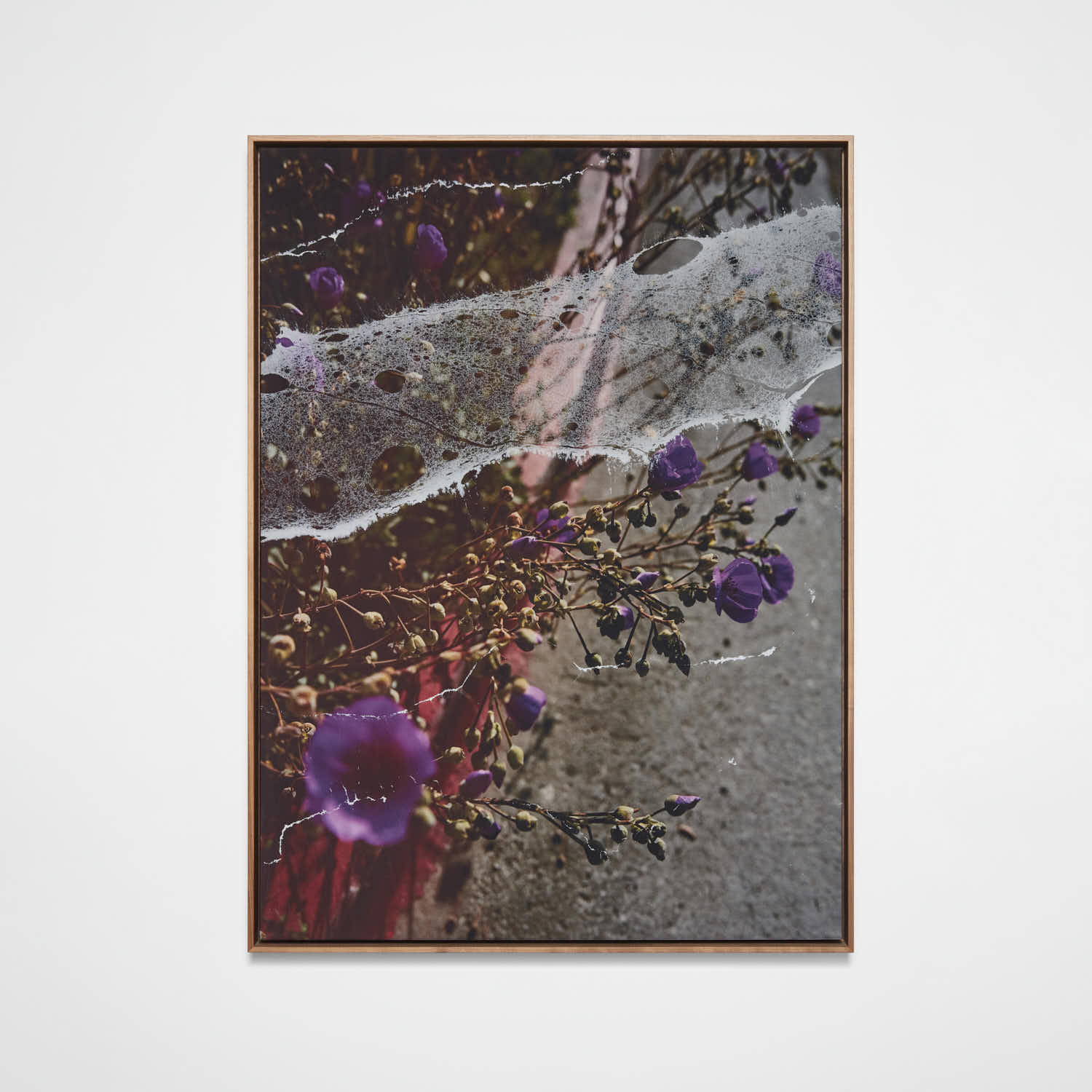
Curb My Enthusiasm, 2023. Archival digital print on cotton canvas with acrylic paint, walnut frame 40.75 × 30.25 in.
SANDSTROM: You should do past life readings based on smell.
JARVIS: I need to. I feel like I won’t be complete unless I get it done in every city with all the readers.
SANDSTROM: How did you make the air freshener?
JARVIS: Really through friendship. Carol Lim has become a really good friend of mine. She used to run Opening Ceremony. That was her baby.
SANDSTROM: Wow. RIP Opening Ceremony.
JARVIS: Right? We live like, a five-minute drive from each other in L.A., and she’ll get in my car and be like, “Have you been farting in here?” We’re always just hit with knee-slap laughter, and I told her I wanted to do an air freshener for my next round of merch with my shows, because I always do a T-shirt. And she’s like, “Okay. I’ll help you.” Carol is very that human that’s business-wise. She’s one of my smart friends, a mentor, and we’re both Pisces. And we sat in my studio one day, picked the two scents, and then I picked two photos based off of a detail of a collage I did for Frieze. So the reality is it’s based on our friendship.
SANDSTROM: Cute. I have a couple more questions left for you. How do you unwind?
JARVIS: Reading, massage, good food, and fall-down laughter with friends–like, off the chair. Maybe a little pee in your pants, that kind of from-your-core hysteria.
SANDSTROM: Totally. I wanted to know who you’ve looked up to during your career, but also which artists are interesting to you right now.
JARVIS: I’m just going to list people: Björk, Simon Lee, Sampha, Lorna Simpson, Carrie Mae Weems, Mickalene [Thomas], Nina Chanel Abney, Keisha Scarville. There’s more, but that grouping just came to mind.
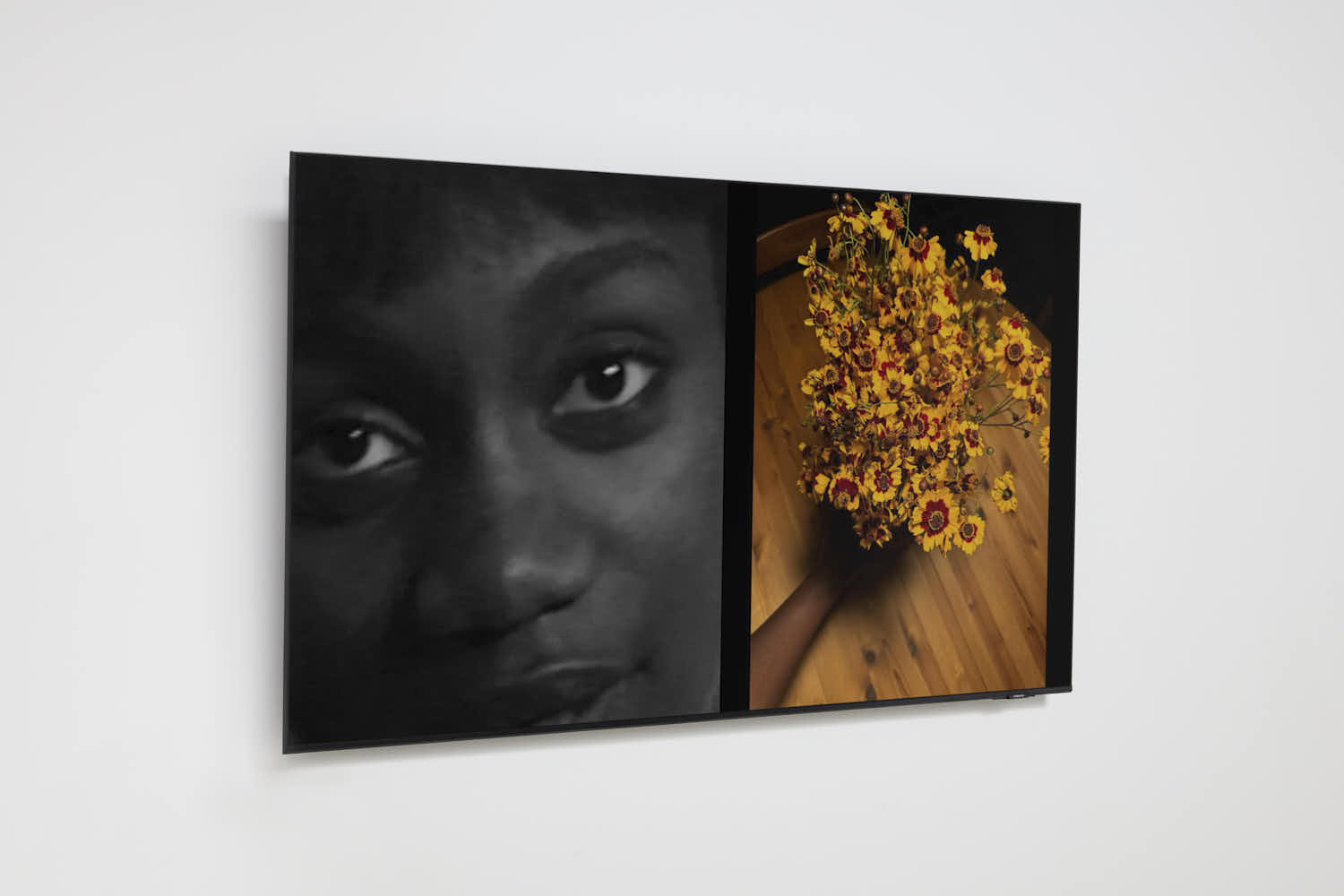
If You Could See My Thoughts, You Would See Your Faces, 2025. Video, color and black and white.
SANDSTROM: That’s a great list. I was wondering if you could compare your experience in the art and fashion worlds a little bit. Feel free to be as slanderous and vulgar as you please, or maybe it’s been really pleasant in both.
JARVIS: I think when it comes down to it, the commercial world and the art world feel very similar to me. I approach my editorials and my commercial work in the same way that I do with my fine art. Everything has a calculation and an attachment to something I feel. But when people ask me what’s the difference, I’m always like, “Well, the art world is more commercial than the actual commercial world.” Right? But the rules are the same within them both. The hierarchy and the way things look and the people who are held and uplifted, they all look the same. And even when you are a chosen person within these groups, it’s still a hard journey, because you have to keep it up. But I found that not being chosen in either of those spaces for so long allowed me to create in the shadows, where it didn’t matter what anyone thought. I find that now when people are paying attention, I still feel like no one’s looking at me. So in a weird way, being ignored has been fucking beneficial to my ego and my soul. There’s a lot of people who are held to a certain ideology, and they have to work within that, and I don’t think that way about myself at all. And I would say one has definitely helped to refine the other, and it’s a ping-pong between the two.
SANDSTROM: That was such a diplomatic and cool response.

JARVIS: Well, the realest thing I can say is that most of the systems that I’ve worked in have been fucked up, and they’ve been sexist, and they’ve been racist, and they’ve been ableist, and they’ve been so hardcore. And I think only once within the fashion scope, I’ve had a creative director use racism to help him escape this thing that he didn’t want me to be doing the job from the get, and I think while on set, he hated the fact that I was just getting on with the talent and doing my thing. And there’s all this stuff that came out in the end. And when I heard what he had said, it freaked me out because of how he played in my face versus how he was on the phone behind my back with my agent. And I think that that part has ruined a bit of the world for me, because really, he’s the person who’s like, “I’m so happy DEI isn’t around.” And you’re like, “Well, DEI is what to you, exactly?” I try not to make any of my interviews or work highly focused on that, which is why all my answers are a little bit more diplomatic, because the core ethos of the story always becomes, “She’s a Black woman and what she’s had to overcome.” And it’s more like, I have to overcome so much every day, because while traveling, people look at me and be like, “Why is she sitting up here with us?” But that’s become so much a part of what the system has created. I just work hard to overcome that for all of us. I like to kick the door open and try and leave my foot back so other people can come through. I mean, people are trying to chop my leg off at the knee to close the door. But for me, I feel like if there’s more of us who are talented, hardworking, and killing it, then that just makes it easier.
SANDSTROM: Does it feel strange that so many of the articles written about you focus on the industry obstacles of being a Black woman?
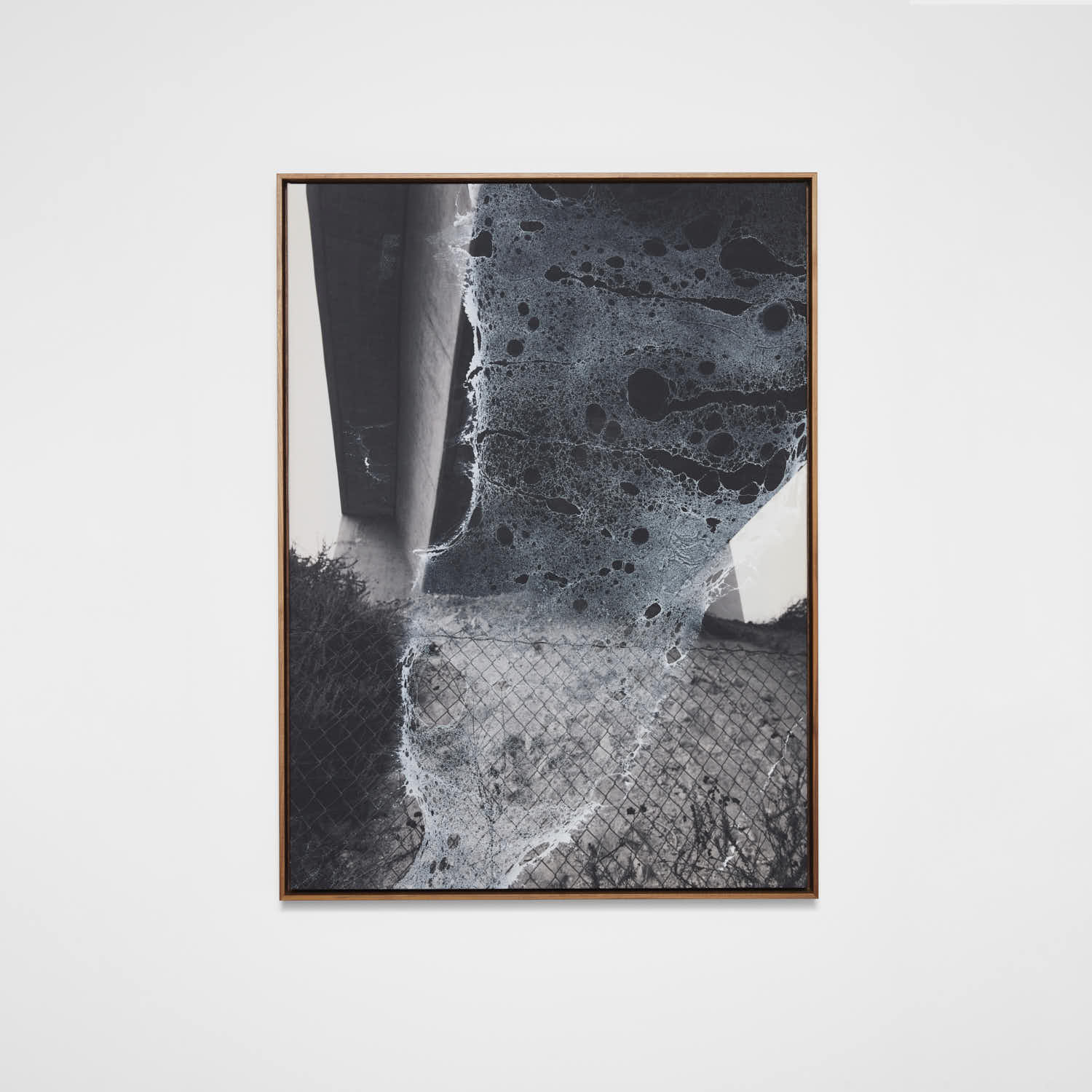
Under the Bridge, Chorus, 2023. Digital print on cotton canvas with acrylic paint, walnut frame. 40.75 x 30.25 in.
JARVIS: I mean, I think that it’s time to change the narrative. In the beginning, it made sense because that was the way in. That’s the way in for a lot of people who want to talk about me and my work. But a lot of my work doesn’t talk about it openly. You have to look in. You have to dig deep. It’s like, how is writing about flowers talking about Black people? I’m like, “We’re talking about flowers. We’re talking about beauty. We’re talking about death. We’re talking about innocence. We’re talking about how I view myself.” But yes, when you zoom out, it’s because of the system, because of the racist, fucked-up, sexist system that I have to view myself through. It’s all related, but I think it’s always obvious. When you see me, you see the crew of people I roll with, that I’m doing it for everyone. I’m doing it for mainly people who look like me, but also girls who feel like me, for boys who feel like me, for everybody who feels like me. No hot, hard-working person left behind.
SANDSTROM: “No hot, hard-working person left behind.”
JARVIS: Exactly.

